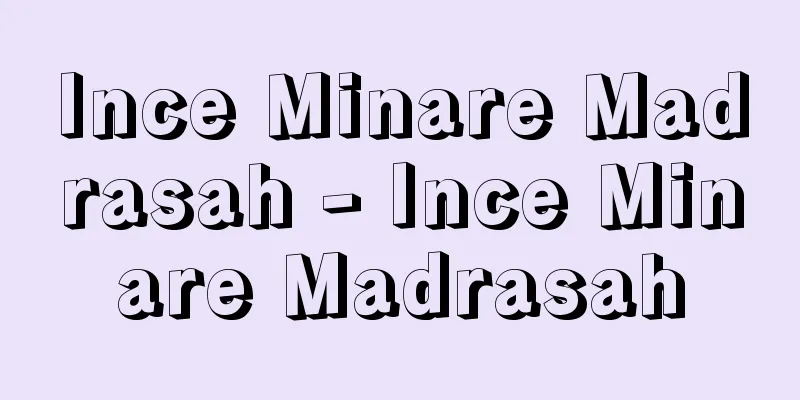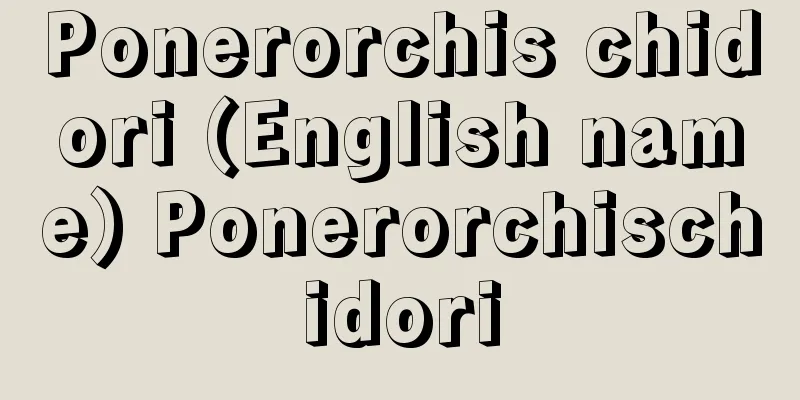The Tale of Ochikubo

|
A story from the Heian period. 4 volumes. The title comes from the fact that the stepmother had the princess live in a lower room in the palace and call her Ochikubo no Kimi. The date of its creation and the author are unknown, but it is thought to have been written by a man around the beginning of the Ichijo reign, between the Kanna and Shoryaku periods (985-995). The story is about the mistreatment of a stepchild, in which an unfortunate princess who is abused by her stepmother is rescued by the son of the Left General and finds happiness. Chunagon had two sons and four daughters with Kita no Kata, and also had a beautiful princess with the daughter of the late king's grandson. Kita no Kata made the princess live in a sunken room in the palace, and treated her like a servant and mistreated her. The princess's faithful maid, Akogi, was in love with Sakon no Shosho's wet nurse, Menotogotatewaki, so the Shosho found out about the princess, and with Akogi's help, the Shosho eventually made a pact with her. The stepmother imprisoned the princess in a room and tried to give her to the lecherous old man Tenyakunosuke, but Akogi's quick thinking allowed the princess to escape and she was rescued by the Shosho. In revenge against his stepmother, Shosho arranged for the Fourth Princess's husband to meet a fool named Omoshiro no Koma, prevented his stepmother and her entourage from going on a pilgrimage to Kiyomizu and the Kamo Festival, and preempted Sanjo Palace, where the Chunagon was about to move. Afterwards, the Chunagon met the princess, learned the whole story, and reconciled. Shosho held a celebration for the Chunagon's 70th birthday and recommended him for Dainagon, and also gave his stepmother the inheritance of the Dainagon's mansion after his death. Shosho's success continued, and the princess gave birth to three sons and two daughters, living in great happiness. From the above, the story can be divided into three parts: Part 1 - Stepchild abuse and the rescue of the Shosho, Part 2 - Revenge against the stepmother, and Part 3 - The Shosho and the princess's prosperity and devotion to the Middle Counselor's side. Throughout the work, we can see a moral view of rewarding good and punishing evil, the ideal of monogamy, and a character that celebrates power, but these are secondary and not the assertion of the work. Rather, the author suppresses subjective thoughts and emotions, and writes matter-of-factly with a calm, intellectual attitude. In that respect, while the story is based on the typical story format of stepchild abuse, the narration is realistic and down-to-earth, and it has considerable value in the history of narrative as a well-structured court family novel that existed before the appearance of The Tale of Genji. There are several extant copies dating back to the Muromachi period, such as the one formerly owned by the Kujo family, but the majority are copies from the Edo period and are recognized as derived from a common ancestor. Printed versions include a 1794 edition and a 1799 edition by Ueda Akinari. [Koichi Nakano] "The Complete Collection of Japanese Classics: Ochikubo Monogatari, edited by Tokoro Hiroshi (1951, Asahi Shimbun)" ▽ "The Complete Collection of Japanese Classical Literature, 13: Ochikubo Monogatari, edited by Matsuo Satoshi (1957, Iwanami Shoten)" ▽ " The Complete Collection of Japanese Classical Literature, 10: Ochikubo Monogatari, edited by Kakimoto Susumu (Kadokawa Bunko)" ▽ "The Complete Collection of Japanese Classical Literature, 10 : Ochikubo Monogatari, edited by Mitani Eiichi (1972, Shogakukan)" ▽ "The Shincho Collection of Japanese Classics, Ochikubo Monogatari, edited by Inaga Keiji (1977, Shinchosha)" [Reference] |Source: Shogakukan Encyclopedia Nipponica About Encyclopedia Nipponica Information | Legend |
|
平安時代の物語。4巻。題名は、継母が姫君を寝殿の一段低い部屋に住まわせて落窪の君と呼ばせたことによる。成立時期、作者とも未詳であるが、およそ一条(いちじょう)朝の初期、寛和(かんな)~正暦(しょうりゃく)(985~995)ごろ、男性によって書かれたものと考えられる。 内容は、継母に虐待される薄幸の姫君が左大将の子息に救われて幸福になるという継子(ままこ)いじめの物語。中納言(ちゅうなごん)には北の方との間に2男4女、亡き王孫の女君との間にも美しい姫君があった。北の方はこの姫君を寝殿の落ち窪んだ部屋に住まわせ、召使い同様の仕打ちをして虐待した。姫君の忠実な侍女阿漕(あこぎ)は左近少将の乳母子帯刀(めのとごたてわき)と恋仲であったので、姫君のことは少将の知るところとなり、やがて少将は阿漕の手引きで姫君と契りを結んだ。継母は姫君を一室に監禁し、好色な老人典薬助(てんやくのすけ)に与えようとしたが、姫君は阿漕の機転で難を免れ、少将に救出される。少将は継母への復讐(ふくしゅう)として、四の君の婿に面白(おもしろ)の駒(こま)という痴者(しれもの)を逢(あ)わせたり、継母一行の清水詣(きよみずもう)でや賀茂祭(かもまつり)の見物を妨害したり、中納言が移ろうとした三条殿を先取りしたりした。その後、中納言は姫君と対面して事の顛末(てんまつ)を知り和解する。少将は中納言のために七十の賀を催したり大納言に推挙したりし、継母にも大納言死後の邸(やしき)を伝領させた。少将はますます栄達し、姫君は3男2女をもうけ幸福を極めた。 以上の内容から、この物語の構成は、第1部継子いじめと少将の救出、第2部継母への復讐、第3部少将、姫君の栄華と中納言方への心尽くし、という3部に分けられよう。全編に勧善懲悪的な道徳観や一夫一婦の理想性や権力謳歌(おうか)的な性格などがみられるが、しかしこれらは副次的なもので、この作品の主張ではなく、むしろ作者は主観的な思想感情を抑え、冷静な知的態度で即物的に筆を運んでいる。その点、継子いじめという類型的な話型を枠組みとしつつも、叙述は写実的、現実的で、『源氏物語』出現以前の構成の整った王朝家庭小説として、物語史上の価値は少なくない。 伝本は、九条家旧蔵本など室町期にさかのぼる写本が数本あるが、大部分は江戸期の写本で、共通の祖本から派生したものと認められる。版本には寛政(かんせい)6年(1794)版、上田秋成校の寛政11年(1799)版がある。 [中野幸一] 『所弘校注『日本古典全書 落窪物語』(1951・朝日新聞社)』▽『松尾聡校注『日本古典文学大系13 落窪物語』(1957・岩波書店)』▽『柿本奨校注『落窪物語』(角川文庫)』▽『三谷栄一校注『日本古典文学全集10 落窪物語』(1972・小学館)』▽『稲賀敬二校注『新潮日本古典集成 落窪物語』(1977・新潮社)』 [参照項目] |出典 小学館 日本大百科全書(ニッポニカ)日本大百科全書(ニッポニカ)について 情報 | 凡例 |
Recommend
Theodore Roethke
1908‐63 American poet. Born in Michigan in the Mid...
Takarai Bakin
A lecturer. The family name was Toryusai until th...
NPN - NPN
《 Non-protein nitrogen 》⇒ Non-protein Protein nitr...
Cassis rufa (English spelling)
…[Tadashige Nabe]. . … *Some of the terminology t...
Montauban - Montauban (English spelling)
It is the capital of the Tarn-et-Garonne departme...
fuels
…The books of law are on the border between sourc...
Karatoji - Karatoji
…Enclosed binding is said to have begun in the ea...
The original place of Buddha - Shaka no Honji
The title of a sekkyobushi (a Buddhist chant). The...
Obrecht
A composer of the Flemish school. He is said to ha...
Open comedones
...A change experienced by most people, especiall...
Yoriharu Omori - Yoriharu Omori
…Chikae, a descendant of the Middle Regent Fujiwa...
Cesare Lombroso
Italian physician. Renowned as the founder of cri...
Nederlandsch-Indie
…the name given to the whole of the present Repub...
Aranjuez (English spelling)
A town in the province of Madrid, in the Autonomou...
Amida Faith - Amida Faith
…Kannon and Seishi are his attendants. [Sadakata ...









